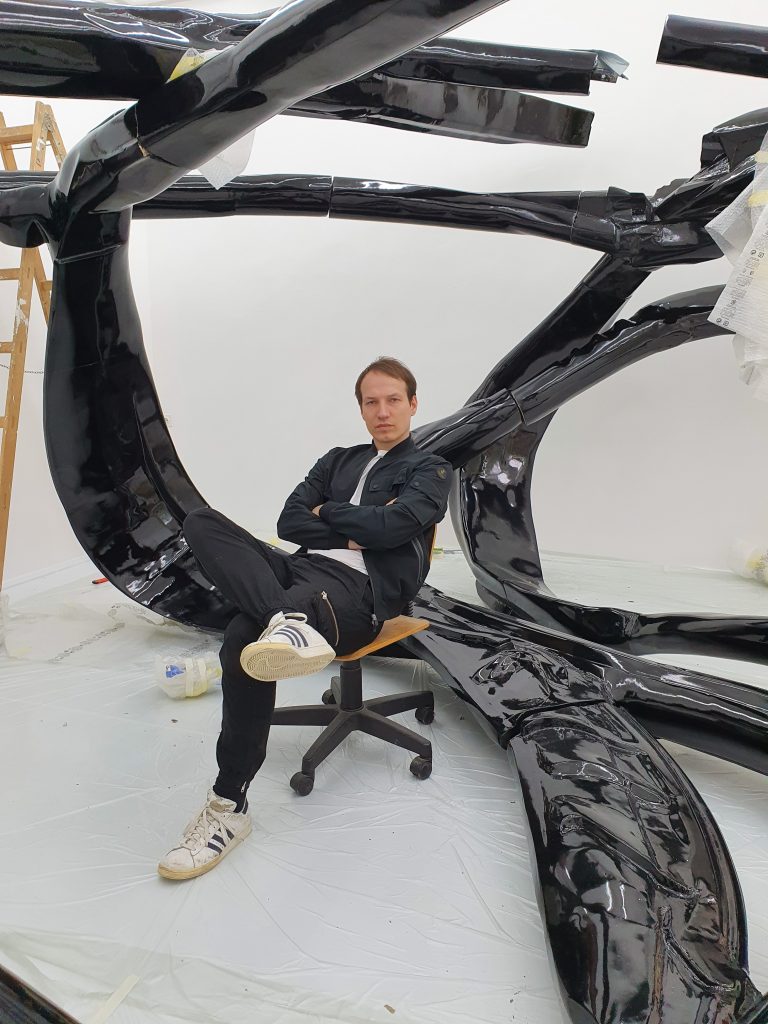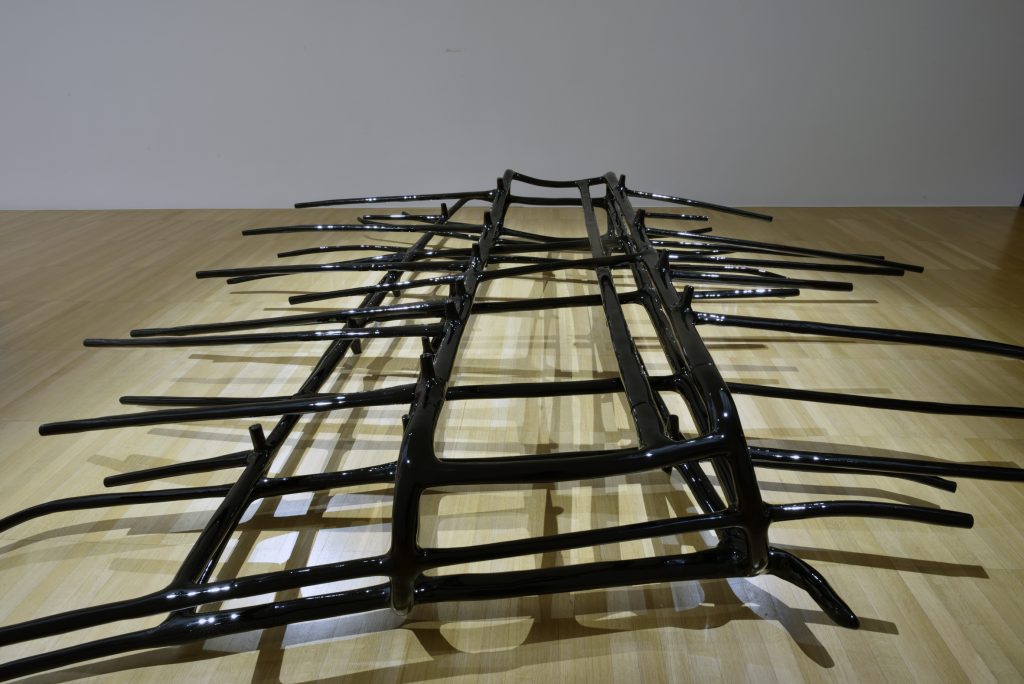
Andrej Škufca
BIO
Andrej Škufca was born in 1987. His practice is characterized by an interest in fiction, technological design, industrial fabrication processes and synthetic materials. His installations present themselves as complex networks that not only combine technological and fictional elements, but also produce immersive and seemingly animated environments in which human agents are no longer central.
He has shown his work in solo exhibitions at Močvara, Zagreb; Aksioma, Ljubljana; the International Center of Graphic Arts, Ljubljana; Miroslav Kraljević Gallery, Zagreb; Karlin Studios, FUTURA, Prague; and DUM Project Space Ljubljana, among others, and at curated group exhibitions in MAXXI– National Museum of XXI Century Arts, Rome; Ludwig Museum, Budapest; Museum of Contemporary Art Metelkova, Ljubljana; Het Niewe Institut, Rotterdam, Nitja in Oslo, and Moderna galerija, Ljubljana. He is also one of the founders and editors of Šum, a journal for contemporary art and theory-fiction.
WORK AT THE EXHIBITION

BESM360-Kitov, 2024
stainless steel, fiberglass, polyester, acrylic
When socialist academics and politicians first began to seriously consider automated planning in the early 1960s, the CIA established a special branch to study what it perceived to be a significant threat. President Kennedy’s top aide warned that socialist progress in cybernetics would offer a tremendous advantage, pushing the Eastern Bloc’s economy far ahead of its American competitor.
A state-wide network proposal was initiated in 1964. Openly worker-oriented, anti-bureaucratic, and decentralizing in principle, the network of nodes envisioned a new technocratic revolution based on mathematical models that automated production across entire states.
With a nod to conspiracy as well as speculative theories, the BESM Ultrastructures series draws from military and civilian infrastructure objects scattered across Eastern Europe that formed parts of a by now almost forgotten era of socialist and communist dreams. Their aspirations give rise to an imagined future where different worlds are possible.
The ongoing BESM Ultrastructures series features constellations of objects specifically designed as nodes within a network, dependent both on one another and the space around them. Hijacking art’s own infrastructures, the installations of BESM Ultrastructures function as connectors of spatially and temporally decoupled sites, suggesting or anticipating the existence of an alternative (world) system emerging from the intersection of reality and fiction.